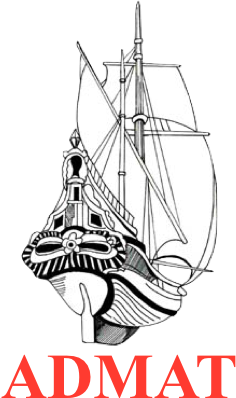ADMAT
The Tile Wreck Maritime Archaeological Project
Monte Cristi, Dominican Republic, Caribbean
Photographs From The 2013-2014 Field Season
May 2013
During the project, a number of interesting artefacts were found. A second French faienceware bowl was found. This originally was white with green lines around the base rim and inside a yellow and green with blue solanaise flower design. This was similar to the one found before which after research by Dr Francois Gendron of ADMAT-FRANCE, at the the Institut de Paléontologie Humaine, Muséum National d’Histoire Naturelle, Paris, came to be the diagnostic which dated the sinking of the wreck from1720-1723. This bowl like the other should have had two handles but was broken, with one handle missing. However the difference with this bowl was that it was blackened and covered with soot. The brakeage revealed that this was broken before the fire, probably during the wrecking process.
A few lead musket balls were found, together with two lead cylinders. These were pieces of lead in a role cut at various lengths. They would be heated and pored into a musket ball mould, producing the ball.
A number of pieces of intact rope were found. These were approximately 1.5cm in diameter, but after having been under water for nearly 300 years, were not in a good condition. The tact that they were buried under the sane with a layer of mud which blocked off the oxydenated water assisted in conserving them. These were packed as they were found and sent to Dr Francois Gendron in Paris. Permission from ONPCS was given for ADMAT to find out as much as we can from these rope samples.
The central section of a French faience ware plate was found as well as a few terracotta floor tiles, one of which was rectangular in shape and had a ribbed pattern. This was the first time this design was found on the wreck site.
The most important find was the primed and armed grenades. There were hollow cannon balls of 4pdr and had been primed by filling the centre core with gunpowder and then a wooden fuse was inserted and locked into place. 36 were located all of which were primed and armed ready to be used. This seems a large number for an armed merchant ship, since these grenades would only be used to prevent being boarded and as a last resort. In addition the fact that they were armed and primed indicated that the ship was sailing into harms way.
An important find, this is the second French faienceware bowl, albeit broken like the other. This one was broken at the time of wrecking and is covered with soot. The bowl was white with green stripes and a central flower design in yellow, blue and green. These designs were produced by the Never Foundry in the Loire Valley and only from between 1720 and 1723. the original diagnostic artefact helped us date the wreck






























